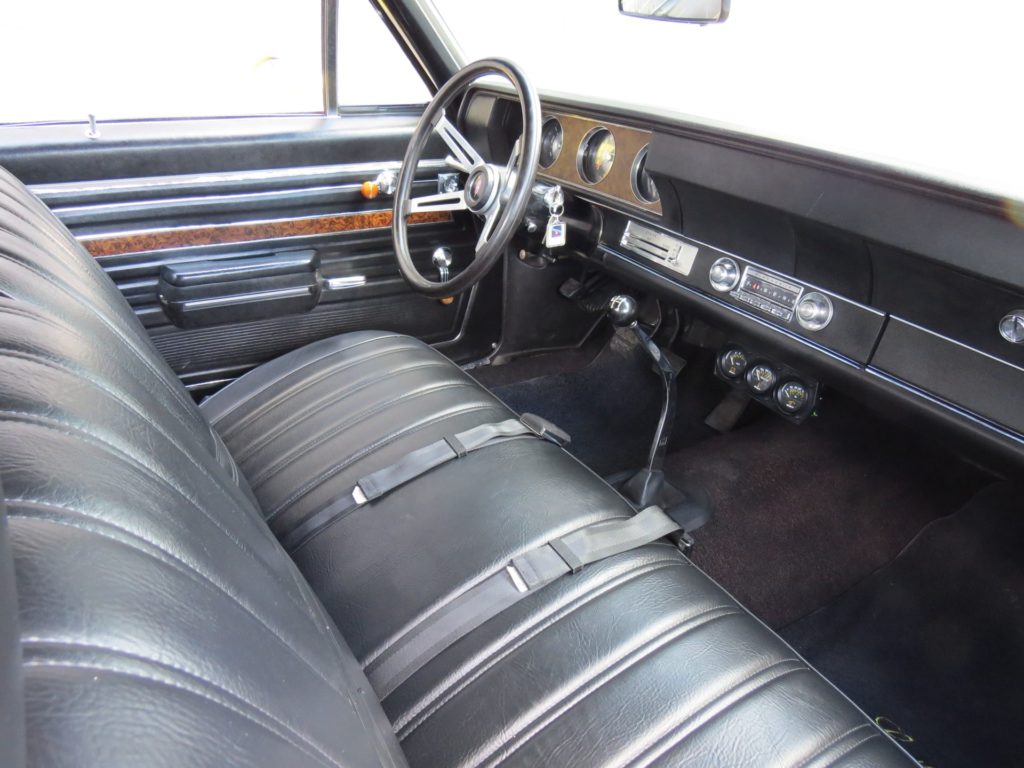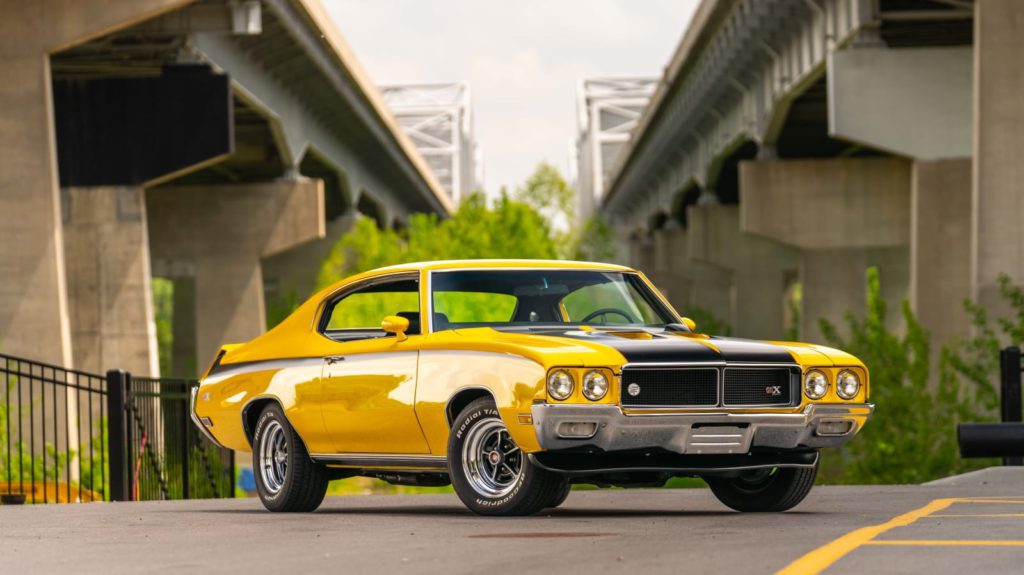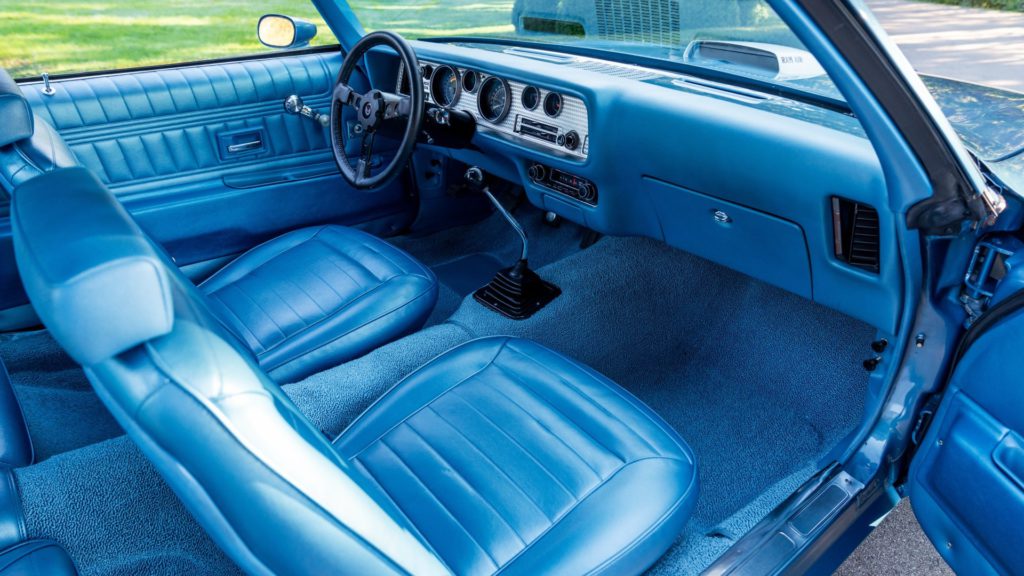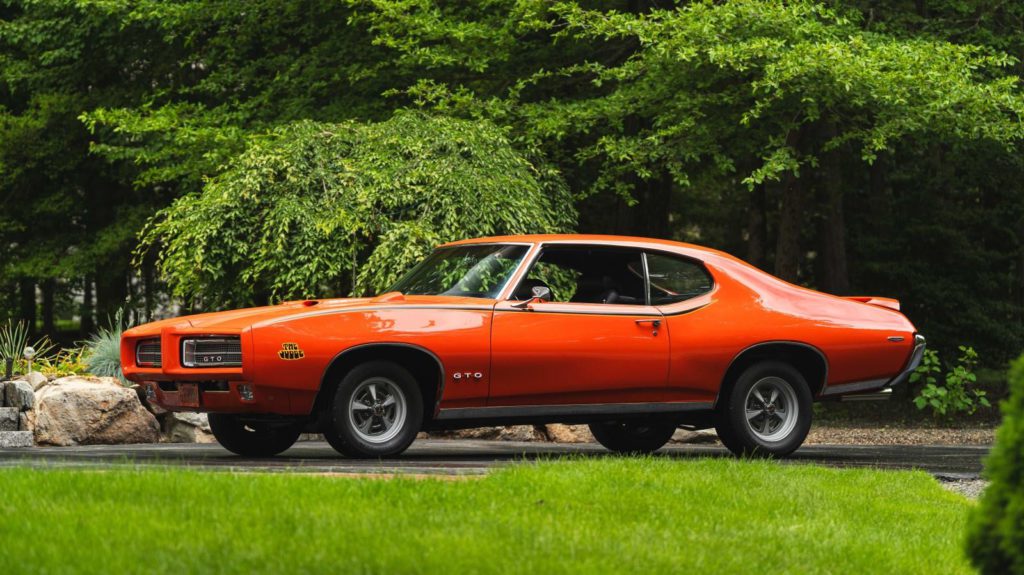American muscle cars once thundered across highways, their rumbling V8 engines embodying raw American freedom. General Motors crafted legendary machines that defined the golden age of performance. Though these mechanical marvels have largely vanished, their spirit lives on in automotive culture. We’ll uncover how innovative engineering and aggressive styling initially captivated the nation, what ultimately led to their extinction, and why these magnificent beasts continue to represent the pinnacle of automotive passion and performance for generations of drivers.
9. 1969 Chevrolet Camaro ZL1 (Exterior)

The ZL1’s interior was purposefully spartan, focusing on what mattered for drag strip domination rather than luxury appointments. The standard gauge package was supplemented with a tachometer that actually read to the engine’s true redline, not some optimistic marketing number.
Basic bucket seats held you in place during hard launches without unnecessary bolstering that would have added weight. The no-nonsense approach extended to minimal sound deadening – you wanted to hear that aluminum 427 singing its mechanical symphony anyway. This was a cockpit built for function over fashion, the automotive equivalent of a weightlifter who skips leg day for more bench press.
1969 Chevrolet Camaro ZL1 (Interior)

The ZL1’s exterior maintained the standard Camaro’s clean lines without flashy graphics announcing its capabilities. This was a sleeper’s approach to styling – let the timeslips do the talking. The functional cowl induction hood was one of the few visual tells that this wasn’t just another Camaro.
Standard wheels and minimal badging meant only true enthusiasts knew what they were looking at – exactly how the drag racers who ordered these cars wanted it. Unlike today’s performance models plastered with wings and vents, the ZL1 kept its world-class performance under wraps, the automotive equivalent of a champion boxer who doesn’t need to trash talk.
8. 1970 Oldsmobile Rallye 350 (Exterior)

The Rallye 350‘s interior delivered a solid balance of comfort and sportiness without breaking the bank. The functional gauge cluster provided essential information at a glance, while the comfortable bucket seats offered decent support during spirited driving without the punishment of race-focused competitors.
Reasonable sound insulation meant you could actually use the AM radio without cranking it to maximum volume. The clean, logical control layout showed Oldsmobile’s attention to ergonomics when some competitors seemed to place switches and knobs by throwing darts at the dashboard. This was a cockpit you could live with daily, not just endure for weekend thrills.
1970 Oldsmobile Rallye 350 (Interior)

Image: Mecum
The Rallye 350’s exterior was a masterclass in attention-grabbing design with its Sebring Yellow paint covering not just the body but the bumpers, grille, and even headlight surrounds. This monochromatic approach was revolutionary in 1970, making the car look like a rolling solar flare.
The fiberglass hood with functional air scoops and rear deck spoiler added performance credibility without going overboard. Flat-black stripes and graphics provided perfect contrast to the yellow canvas. While modern cars with similar styling approaches look desperate for attention, the Rallye 350 pulled it off with an authenticity that still turns heads five decades later.
7. 1967 Oldsmobile 442 (Exterior)

The 442’s interior elevated the muscle car experience with genuine attention to comfort and build quality. Nicely bolstered bucket seats actually supported your body during spirited driving, while the dash layout prioritized function without feeling like a penalty box.
Materials quality exceeded what you’d find in most competitors, with better sound deadening and panel fit that wouldn’t embarrass an Oldsmobile salesman. The clean, driver-focused gauge cluster provided all necessary information without the visual chaos found in lesser muscle machines. This was a cockpit designed for adults, not teenagers with more hormones than sense.
1967 Oldsmobile 442 (Interior)

The 442’s exterior styling struck the perfect balance between aggression and sophistication with its clean lines and subtle performance cues. The optional red plastic inner fender liners and louvered hood on W30 models whispered “performance” instead of shouting it like an insecure teenager.
Over the intervening century and change, 43 different auto companies have operated under The General’s banner, running the gamut from famous marques like Cadillac, Pontiac, and Oldsmobile to companies like Oakland, LaSalle, Sheridan, and McLaughlin that only big car nerds like me remember. Among these, the discontinued oldsmobile 442 was particularly painful for muscle car enthusiasts who appreciated its perfect balance of performance and luxury.
6. 1970 Chevrolet Chevelle SS 454 (Exterior)

The Chevelle’s interior balanced functionality with just enough comfort to remind you this wasn’t a stripped-down race car. The horseshoe shifter for the Muncie 4-speed felt substantial in your hand, while the gauge package actually told you something useful about what was happening under the hood.
Don’t expect luxury car appointments – this cockpit was all business with its vinyl bench or optional buckets that held you in place during hard acceleration. The minimalist approach meant fewer distractions from the serious business of managing all that horsepower, unlike today’s button-festooned interiors that require an engineering degree to operate.
1970 Chevrolet Chevelle SS 454 (Interior)

The Chevelle SS 454’s exterior was the perfect muscle car template – aggressive without trying too hard. That functional cowl induction hood didn’t just look menacing – it force-fed cold air to the hungry big block when you put your foot down.
Twin racing stripes, SS badging, and bulging quarter panels telegraphed this car’s intentions without resorting to the excessive styling elements that plague modern performance machines. The clean, purposeful lines still influence design today, proving that honest performance styling ages like fine whiskey while trendy designs turn to vinegar.
5. 1970 Buick GSX (Exterior)

The GSX’s cabin struck the perfect balance between luxury and sport, featuring woodgrain accents alongside performance-focused gauges. Plush bucket seats actually supported your back during hard cornering, unlike the flat vinyl benches found in lesser muscle machines.
The functional layout put everything within easy reach without the claustrophobic feel of some competitors. Buick’s attention to sound deadening meant you could actually hear your passenger speaking while hammering down the highway, a genuine luxury feature in an era when most muscle cars were essentially glorified echo chambers with wheels.
1970 Buick GSX (Interior)

The 1970 Buick GSX‘s exterior was automotive theater with its Saturn Yellow or Apollo White paint schemes paired with bold black striping that ran from nose to tail. That functional hood scoop wasn’t just for looks – it fed fresh air directly to the hungry 455 beneath.
The distinctive rear spoiler, functional hood tach, and unique wheels announced this wasn’t your grandmother’s Buick long before you fired up the engine. While Chevelles and GTOs screamed “look at me,” the GSX projected the confidence of something that could back up its visual promises with actual performance – no empty visual checks being written here.
4. 1970 Pontiac Firebird Trans Am (Exterior)

The Trans Am’s interior delivered the perfect balance of sportiness and functionality with its driver-focused dashboard and comfortable bucket seats. The engine-turned aluminum instrument panel backdrop wasn’t just for show – it reduced glare while adding visual punch.
Performance-oriented gauges included a functional tachometer that actually redlined at the engine’s true limit, not some marketing-friendly number. The three-spoke steering wheel provided excellent feedback, unlike today’s over-assisted systems that feel like steering a video game. This cockpit meant business without sacrificing the comfort expected in a premium Pontiac.
1970 Pontiac Firebird Trans Am (Interior)

The Trans Am’s exterior design became instantly iconic with its Polar White paint and blue center stripe that commanded attention without looking desperate for it. That shaker hood scoop wasn’t just visual theater – it literally quivered with engine vibrations while force-feeding the 400 cubic inches underneath.
The aerodynamic rear spoiler and front air dam weren’t bolt-on styling gimmicks – they genuinely improved high-speed stability. Unlike today’s cars with fake vents and decorative plastic, every element of the Trans Am’s design served a performance purpose. This honest approach to styling helps explain why these cars still turn heads 50+ years later.
3. 1966 Pontiac GTO (Exterior)

The GTO’s interior balanced sport and comfort with its wide bucket seats and driver-focused dashboard layout. The optional wood steering wheel and shifter added a touch of class that competitors couldn’t match, while still maintaining the purposeful feel expected in a performance machine.
Pontiac’s attention to detail showed in small touches like proper gauge placement and quality switchgear that didn’t feel pulled from the bargain bin. The overall effect was a cabin that felt special without trying too hard – something most modern performance cars with their overdone carbon fiber and red stitching could learn from.
1966 Pontiac GTO (Interior)

The 1966 GTO’s exterior design hit the sweet spot with its stacked headlights, muscular haunches, and clean overall shape that has aged remarkably well. Those subtle hood scoops weren’t just for show – they conveyed performance intent without the cartoonish exaggeration found in some rivals.
The hidden headlamps available on some models added mystery to an already aggressive face. Unlike today’s over-styled performance cars that look like transformers having an identity crisis, the GTO’s honest, straightforward design communicated performance through proportion and stance rather than tacked-on bits of plastic.
2. 1969 Pontiac GTO Judge (Exterior)

The Judge’s interior delivered bare-knuckle performance vibes with just enough comfort to keep you from regretting your purchase. The simulated wood wheel and dash inserts added a touch of class, while the functional gauge cluster actually told you what the engine was doing.
That hood-mounted tach wasn’t just for show – it kept your eyes on the road where they belonged while you banged through the gears. The bucket seats offered decent support, but make no mistake, this cabin prioritized function over frills, much like a boxer who skips fancy footwork in favor of a knockout punch.
1969 Pontiac GTO Judge (Interior)

The Judge’s exterior styling was pure automotive rebellion with its outrageous Carousel Red paint (actually more orange than red) and wild “The Judge” decals plastered on the fenders. That functional rear spoiler wasn’t there for show – it kept the back end planted during high-speed runs.
Unlike today’s over-designed performance cars with fake vents and useless scoops, every styling element on the Judge served a purpose. The Ram Air hood fed the hungry 400 V8, while those distinctive Rally II wheels weren’t just for looks – they were stronger and lighter than standard options. This was design with honest performance intentions.
1. 1970 Buick Grand Sport 455 (Exterior)

The Grand Sport’s interior delivered genuine luxury compared to bare-bones competitors, featuring plush seating surfaces and real woodgrain trim. Noise isolation actually existed, unlike in Chevelles where conversations became shouting matches above 60 mph. If you’re a big fan of luxury cars from the 1970s, you might appreciate this round up of cars from back then that were all collector’s picks.
The instrument panel featured clear, legible gauges housed in a dash that didn’t look like an afterthought. Comfort touches like proper armrests and decent air conditioning proved you could go fast without suffering for your thrills. This cabin managed to feel special without resorting to the tacky add-ons found in lesser muscle machines.
1970 Buick Grand Sport 455 (Interior)

The Grand Sport 455’s exterior embodied restrained aggression with subtle badging and clean body lines that have aged remarkably well. The lack of garish graphics and bolt-on scoops didn’t mean this Buick lacked presence – its muscular stance and purposeful look communicated performance with maturity.
Chrome accents and understated dual exhaust tips showcased Buick’s attention to detail. Unlike the “look at me” approach of the GSX, the Grand Sport appealed to buyers who didn’t need to announce their arrival blocks before they got there. This sleeper approach to styling makes these cars especially appealing to today’s collectors tired of overdesigned modern performance machines.





























